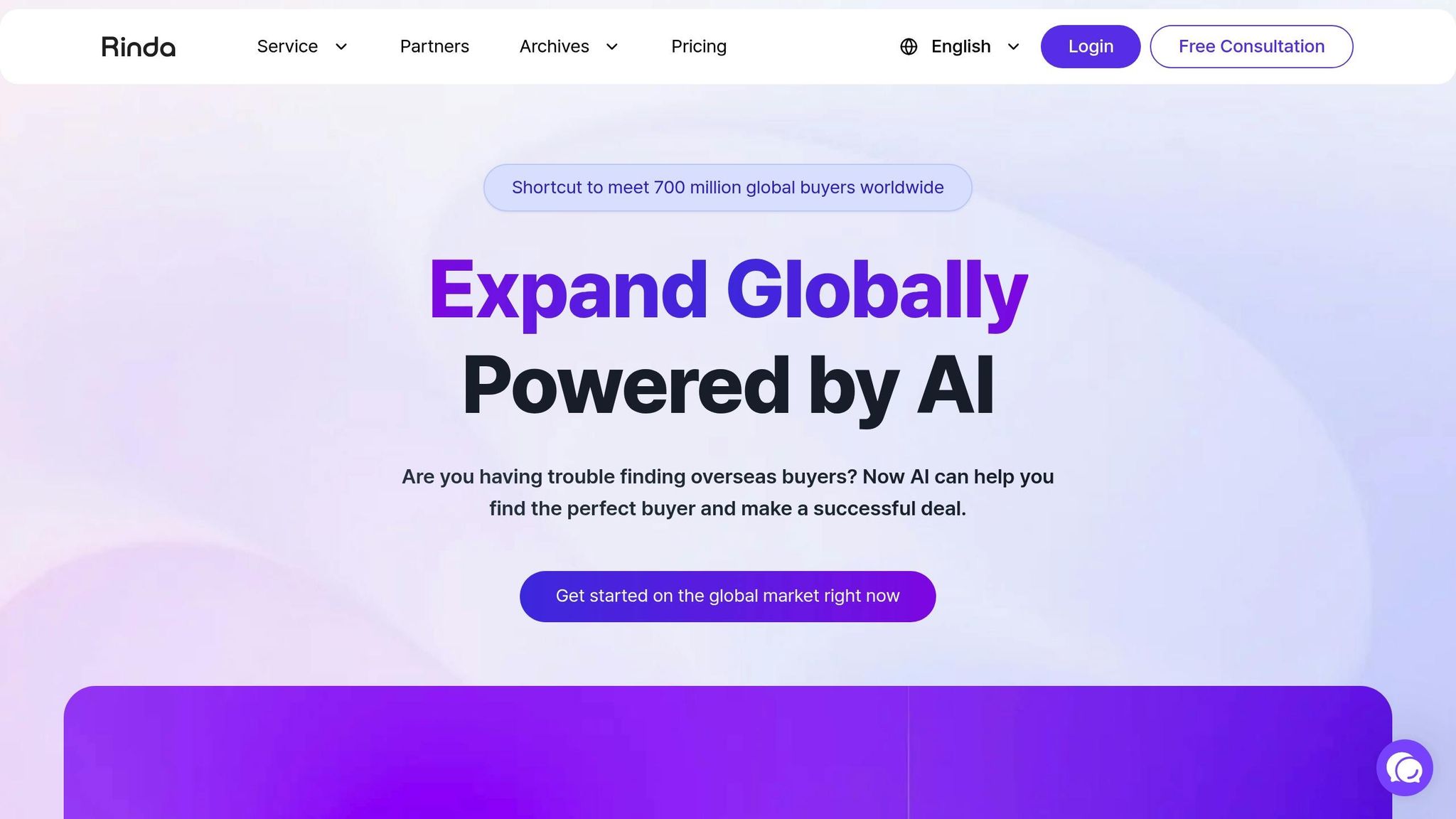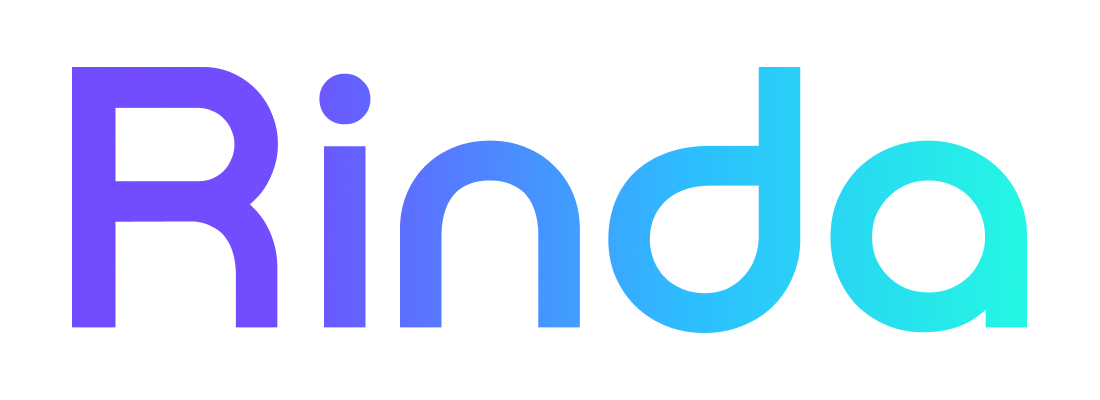47% Productivity Boost: How 1,000+ GTM Professionals Save 12 Hours Weekly with AI
AI is reshaping GTM workflows, helping professionals save 12 hours weekly and boost productivity by 47% through enhanced lead discovery and outreach.

[The response was cut off. Here is the complete introduction:]
By 2025, nearly half of GTM professionals in the U.S. are leveraging AI to transform their workflows, with reported productivity gains of 47% and 12 hours saved weekly. According to ZoomInfo’s latest survey, this shift is reshaping sales and marketing operations, enabling teams to close deals faster, grow revenue, and improve win rates - all while focusing on high-value tasks instead of repetitive processes.
In this article, you'll discover:
- How AI boosts efficiency by automating lead discovery and outreach, saving teams valuable hours each week.
- Key metrics to track ROI, including reduced customer acquisition costs and higher conversion rates.
- Actionable steps to integrate AI into your sales strategy for measurable results.
With AI adoption accelerating across industries, understanding its potential is critical for staying ahead in today’s competitive landscape. Whether you’re managing a sales team or planning to scale operations, the insights shared here will help you make informed decisions and maximize productivity.
Let’s explore how AI can redefine your sales strategy and deliver measurable outcomes for your business.
Pipeline Acceleration: How AI Helps with Sales Productivity
Main Benefits of AI-Powered Sales Automation for GTM Teams
AI is reshaping sales operations by delivering tangible improvements that go far beyond traditional automation. For GTM teams, adopting AI-powered tools leads to transformative changes in how they discover prospects, engage with customers, and allocate resources. These advancements not only streamline operations but also create a ripple effect that fuels growth and sharpens a team’s competitive edge in today’s fast-moving sales landscape. Let’s dive into the key benefits that AI brings to the table.
Automated Buyer Discovery and Outreach
One of the most time-consuming aspects of sales - finding and connecting with the right buyers - becomes far more efficient with AI. Instead of relying on manual research, AI sifts through massive datasets to identify high-potential prospects. By analyzing behavioral signals, company growth trends, and past engagement data, AI pinpoints leads that are most likely to convert. This means sales teams can spend their time on qualified prospects instead of chasing cold leads.
But AI doesn’t stop at identification. It also personalizes outreach at scale. Using AI, teams can create tailored messages that reference specific company milestones, industry insights, or individual pain points. This makes outreach feel personal, even when it’s happening at scale. As a result, sales professionals can hold meaningful conversations with a larger pool of prospects, maintaining the quality of engagement that builds trust and drives conversions.
Measurable Productivity Gains
AI isn’t just about saving time - it’s about making every minute count. Survey data shows clear productivity improvements that directly impact revenue. With AI handling repetitive tasks, sales teams can focus on high-value activities like strategic planning, nurturing relationships, and closing deals.
Over time, these gains multiply. Teams that start by using AI for simple tasks, such as drafting emails or conducting lead research, often expand their use to more complex processes like managing pipelines, analyzing competitors, and supporting customer success. This creates a cycle of continuous improvement, where workflows become more efficient, and productivity accelerates as teams master AI tools.
Lower Customer Acquisition Costs
AI-powered tools also help reduce customer acquisition costs by improving targeting and optimizing resource allocation. Traditional sales methods often rely on broad outreach campaigns with low conversion rates, leading to higher costs per customer. AI changes the game by analyzing data to identify the most promising leads, allowing teams to focus their efforts where they’re most likely to see results.
Beyond better targeting, AI enables smarter resource allocation across the sales funnel. By tracking engagement patterns and conversion probabilities in real time, AI helps sales managers make informed decisions about where to direct their team’s energy and budget. This reduces wasted effort on low-potential leads and ensures that high-value opportunities get the attention they deserve.
Better Multilingual Communication
Expanding into global markets becomes much easier when AI takes on the challenge of multilingual communication. Sales teams can engage with prospects in different regions without needing native speakers or expensive translation services. AI-powered tools ensure that messaging is not only accurate but also consistent with the brand’s voice, while adapting to local customs and business practices.
This capability levels the playing field, allowing smaller teams to compete in global markets that were once dominated by larger organizations with extensive international resources. By breaking down language barriers, AI opens up new opportunities while maintaining the personalization and cultural awareness that international buyers expect. In short, it helps teams connect with prospects worldwide without compromising on quality or professionalism.
How RINDA Delivers Measurable ROI: Features and Use Cases

RINDA streamlines buyer discovery, personalized communication, and performance tracking into a single, cohesive workflow, making it a powerful tool for GTM teams looking to drive measurable ROI. Its strength lies in its seamless integration of these functions. By eliminating the need for multiple tools to handle prospecting, outreach, and analytics, RINDA simplifies operations and enhances productivity for sales teams. Below, we explore the standout features that make this possible.
AI Buyer Discovery and Interest Verification
RINDA takes lead generation to the next level with its AI-powered buyer discovery engine. By combining advanced algorithms with real-time interest verification, it identifies prospects who are actively in the buying cycle. This ensures sales teams can focus on leads with genuine potential. Additionally, built-in credibility checks help prioritize high-quality prospects, streamlining daily operations and driving revenue growth.
Multilingual Email Personalization and Analytics
RINDA excels in email personalization by crafting tailored messages for each prospect based on their unique profile. It factors in details such as industry, company size, and preferences to create outreach that feels genuine and relevant. With support for over 20 languages, RINDA enables teams to connect with prospects globally. Moreover, its integrated analytics provide insights into key engagement metrics like open and response rates, helping teams refine their strategies for maximum impact.
Custom Solutions for U.S.-Based Businesses
RINDA’s platform is designed to adapt to the specific needs of U.S. businesses. It integrates seamlessly with existing CRM systems, sales workflows, and compliance standards, ensuring a smooth transition without disrupting established processes. This customization makes it particularly effective for teams navigating the complexities of the U.S. market.
The All‑in‑One plan, priced at approximately $615 per month for the first 50 teams, combines AI-driven automation with expert market insights. This plan includes a "no meeting, full refund" guarantee, making it a risk-free option for businesses aiming to expand internationally while maintaining operational efficiency.
For smaller teams or those scaling up, the Standard plan at $120 per month offers a cost-effective solution. It includes unlimited lead searches, 1,000 enriched profiles and emails per month, address verification, multilingual capabilities, and automated outreach. Both plans are designed to help businesses streamline operations and achieve measurable growth.
Step-by-Step Guide: Using AI to Transform Sales Productivity
Bringing AI into your sales operations requires a carefully planned approach that blends advanced technology with strategic execution. Leading GTM teams have reported a 47% increase in productivity by following a structured process that emphasizes data readiness, customized strategies, and ongoing performance improvements. Below is a detailed guide to help you integrate AI into your sales workflow effectively.
Setup and Data Integration
The success of AI in sales starts with well-prepared data and seamless system integration. Clean, consistent data ensures AI algorithms can deliver precise buyer insights. Begin by auditing your customer data to remove duplicates, standardize formats, and organize fields like company names, contact details, and industry classifications.
RINDA integrates directly with your CRM, pulling in historical customer data, interaction logs, and sales metrics. This organized data foundation is essential for building the personalized strategies discussed earlier.
To maximize AI's potential, configure data sources to include purchase history, demographic details, and behavioral signals. RINDA's AI engine uses this information to create dynamic Ideal Customer Profiles (ICPs) that adapt as new data and market trends emerge. Teams that dedicate time to thorough data preparation often achieve 35% faster AI adoption and more accurate lead scoring right from the start.
Creating Custom Buyer Strategies
Once your data is ready, focus on tailoring outreach efforts using AI-driven insights. AI transforms broad, generic campaigns into highly targeted strategies. RINDA’s machine learning capabilities analyze customer interactions, purchasing behavior, and engagement history to refine ICPs and predict market shifts. This allows your team to prioritize leads that are most likely to convert.
Using predictive analytics, you can uncover seasonal trends and purchasing cycles. RINDA’s AI identifies demand fluctuations, enabling you to adjust your messaging and timing proactively. Its ability to pinpoint micro-segments helps craft hyper-personalized messages for specific prospect groups.
For businesses in the U.S., RINDA’s customization features ensure strategies align with local market conditions, compliance standards, and regional preferences.
Automating Outreach and Tracking Performance
Automation is where personalized communication scales efficiently across a large audience. RINDA’s multilingual capabilities ensure outreach feels personal and relevant, even across global markets.
The platform’s generative AI crafts tailored emails by analyzing a prospect’s preferences, social media activity, and past interactions. Every email is optimized for subject lines, tone, and calls to action based on real-time engagement data. By automating these tasks, sales teams save an average of 12 hours a week, freeing up time to focus on closing deals.
RINDA’s integrated analytics provide immediate insights into campaign performance. Metrics such as open rates, response rates, and conversion trends are tracked across buyer segments, allowing teams to adjust strategies dynamically. Automated follow-ups can be triggered by key actions, such as email opens or website visits, ensuring timely and relevant communication that keeps prospects engaged.
This continuous feedback loop - powered by automation and real-time tracking - helps refine future outreach efforts. RINDA’s AI learns from every interaction, improving strategies and identifying the most effective content formats for different customer groups.
Measuring and Maintaining Productivity Gains: Key Metrics and Ongoing Improvement
Achieving a 47% productivity boost is impressive, but the real challenge lies in sustaining and building on those gains. To ensure long-term success, GTM teams must consistently track and analyze performance metrics. This approach not only highlights what’s working but also uncovers new opportunities, allowing teams to make informed adjustments that amplify the benefits of AI.
It’s essential to go beyond surface-level metrics like email open rates or lead volume. While these provide a starting point, they don’t fully capture the depth of AI’s impact. Instead, focus on metrics that drive continuous improvement and meaningful productivity enhancements.
Key KPIs for AI-Driven Sales Teams
Time savings are a cornerstone of measuring AI’s return on investment (ROI). Start by tracking how many hours sales representatives save each week by comparing pre-AI tasks - like manual lead research, writing emails, and scheduling follow-ups - with automated processes. For instance, if tasks save an average of 12 hours weekly, you can identify where AI is delivering the most value.
Lead quality metrics are another critical area, offering insights into AI’s ability to refine and target opportunities. Monitor indicators such as lead-to-opportunity conversion rates, average deal size, and sales cycle duration. Tools like RINDA’s AI-driven buyer discovery and real-time interest verification allow teams to focus on high-quality prospects, improving overall conversion rates.
Revenue efficiency metrics provide a direct view of AI’s bottom-line impact. For example, calculate the reduction in customer acquisition costs (CAC) by comparing total sales and marketing expenses per new customer before and after implementing AI. Additionally, track metrics like revenue per sales representative and the number of qualified meetings booked to measure how AI is driving productivity.
Key Weekly KPIs to Monitor:
- Hours saved per sales rep by task category
- Lead-to-opportunity conversion rate
- Average response time to qualified leads
- Cost per qualified lead generated
- Revenue per sales representative
Ongoing Strategy Optimization
To keep pace with shifting market conditions and buyer behavior, regular performance reviews are essential. Schedule monthly strategy sessions using RINDA’s analytics dashboard to analyze trends in buyer engagement, seasonal fluctuations, and the effectiveness of messaging across different market segments.
Continuously update RINDA’s settings with fresh data. For example, refine your Ideal Customer Profile (ICP) by incorporating insights from recent successful deals and market changes. This ensures that the platform’s AI algorithms remain aligned with evolving buyer needs, enhancing personalization and targeting accuracy.
Experimentation is another key to ongoing improvement. Conduct A/B tests on messaging, timing, and formats to optimize results. RINDA’s multilingual capabilities enable simultaneous testing across various markets, helping uncover regional preferences and buying habits. These insights can then guide broader strategy adjustments.
Once you’ve refined your strategies, benchmark your results against industry standards to validate progress and identify areas for further improvement.
Benchmarking U.S.-Specific Results
Industry benchmarks provide essential context for evaluating AI-driven gains. Comparing your performance against sector-specific standards helps you understand where you stand and what needs improvement. RINDA’s U.S.-focused customization ensures that these benchmarks align with the realities of your market segment.
Regional analysis also plays a critical role. For instance, technology buyers on the West Coast may respond differently to outreach tactics than those in other regions. RINDA’s analytics can identify these patterns, allowing you to tailor your approach based on location-specific insights, which maximizes conversion rates across diverse U.S. markets.
During quarterly reviews, compare your performance to both industry benchmarks and regional data. This process isolates the impact of AI from broader market trends, ensuring you accurately attribute productivity gains to your technology investment. By doing so, you can confidently measure the success of your AI initiatives and make informed decisions for future growth.
FAQs
How does AI help GTM teams find better leads and improve outreach?
AI empowers go-to-market (GTM) teams by simplifying lead discovery and optimizing outreach efforts. By automating tedious tasks like prospecting and lead qualification, it allows teams to focus on leads that offer the highest potential. Advanced algorithms analyze data to identify and rank prospects, ensuring that resources are directed toward the most promising opportunities.
Beyond lead identification, AI enhances outreach by enabling personalized and scalable communication. Whether it’s crafting customized emails or setting up follow-up sequences, automation reduces the workload while tapping into data-driven insights. This approach not only saves time but also boosts conversion rates and speeds up the sales pipeline, making every interaction more targeted and impactful.
How can sales teams successfully incorporate AI into their daily workflows?
To bring AI into your sales processes effectively, start by pinpointing repetitive tasks such as data entry or lead scoring that are prime candidates for automation. Opt for AI tools that work smoothly with your current CRM and other systems, and prioritize thorough training for your team to encourage successful adoption.
Kick things off with small pilot projects to test how AI solutions perform. Monitor their results closely and make necessary tweaks before committing to a full-scale implementation. This step-by-step method helps reduce disruptions and ensures a seamless integration. Continuously assess how AI impacts productivity, and adjust workflows to keep pace with your team's changing needs.
What are the most important KPIs to track when evaluating the impact of AI on sales performance?
To evaluate the effectiveness of integrating AI into sales, it's essential to monitor key performance indicators (KPIs) that highlight improvements in both operational processes and financial outcomes. Some critical metrics to consider include:
- Revenue growth: Examine how AI-driven strategies contribute to higher sales figures and overall business expansion.
- Lead response time: Track the speed at which your team engages with leads, as quicker responses often result in better conversion rates.
- Customer engagement rates: Observe how AI tools improve interactions and strengthen relationships with customers.
- Sales velocity: Measure the time it takes for deals to progress through your sales pipeline.
- Deal closure rates: Keep an eye on the percentage of deals successfully finalized after adopting AI solutions.
- ROI of AI tools: Determine the return on investment to confirm that your AI tools are delivering tangible benefits.
By focusing on these metrics, you can gain valuable insights into how AI is reshaping your sales processes and contributing to measurable success.
Related Blog Posts
- AI Sales Agents Replace 10,000+ Jobs in July - Is Your Sales Team Next?
- From Cold Calls to AI Agents: How B2B Sales Hit 82% Higher Conversions with Personalization at Scale
- From $40 to $3.1 Billion: Clay's GTM Engineering Revolution Shows the Future of B2B Sales Automation
- Study Reveals: AI-Powered Sales Teams Achieve 25% Higher Revenue Growth in 2025
